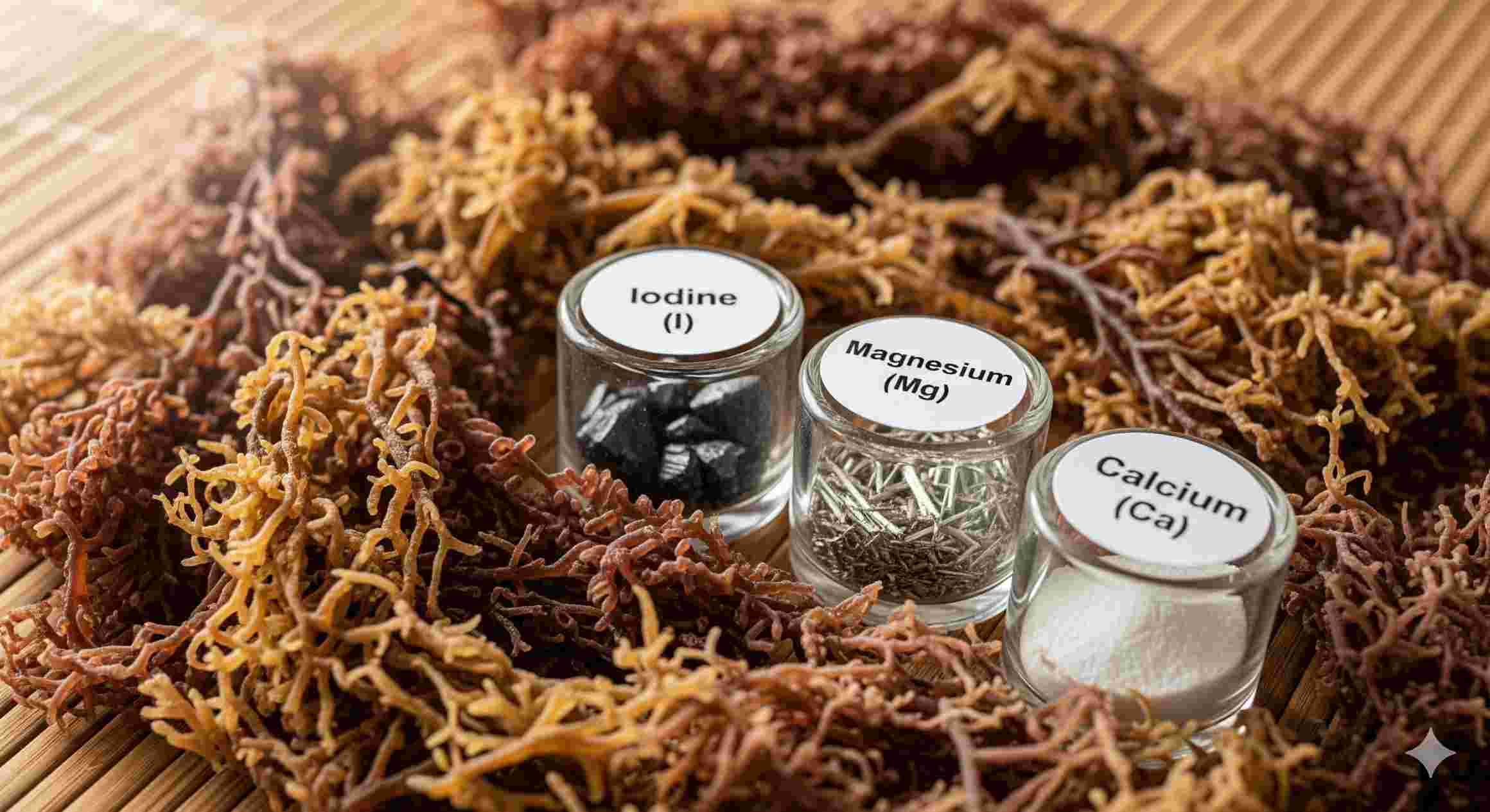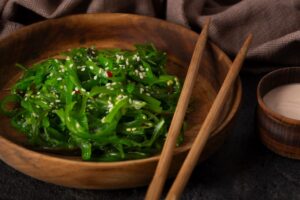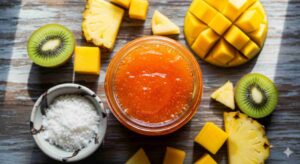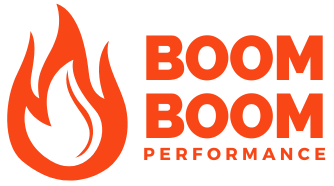
I’ll admit it—I used to scroll past sea moss like it was just some trendy green goo on Instagram. Then, a client of mine, desperate for a natural way to support recovery after intense workouts, asked me, “Andre, what are the 92 minerals in sea moss?” That question sent me down a rabbit hole of research, tasting experiments, and late-night smoothie concoctions.
Fast forward, and now I’m a firm believer that this slippery little sea vegetable deserves a spot in your diet. Here’s the lowdown on why it’s more than hype and how it can fuel your body from head to toe.
What Makes Sea Moss So Mineral-Rich?
Sea moss, also called Irish moss, is a type of red algae harvested from the rocky coasts of the Atlantic. Unlike terrestrial vegetables, it pulls nutrients directly from the ocean, soaking up a spectrum of minerals. That’s why it contains all 92 trace minerals your body needs to function optimally. From iodine for thyroid health to magnesium for muscle function, sea moss acts as a natural multivitamin.
The beauty is that these minerals exist in a bioavailable form, meaning your body can absorb them efficiently. Unlike some supplements that pack numbers but deliver little, sea moss gives your cells what they need in a way they recognize naturally. That’s why athletes, wellness enthusiasts, and even your neighbor who’s obsessed with smoothies are adding it to their routines.
What Are The 92 Minerals Present In Sea Moss?
Sea Moss is famous for being rich in minerals. It doesn’t literally provide all 92 elements on the periodic table, but it does contain trace amounts of up to 92 of the 102 known minerals the human body uses. These are typically measured in varying concentrations, and many are only in trace amounts.
Here’s the full list of the minerals commonly cited in sea moss:
Macro-minerals (major amounts):
-
Calcium
-
Magnesium
-
Potassium
-
Sodium
-
Phosphorus
-
Sulfur
-
Chlorine
Trace minerals (smaller but essential amounts):
-
Iron
-
Zinc
-
Copper
-
Manganese
-
Selenium
-
Iodine
-
Fluorine
-
Chromium
-
Molybdenum
-
Cobalt
-
Nickel
Other reported trace elements (many in ultra-trace levels):
-
Aluminum
-
Antimony
-
Arsenic (trace, naturally occurring)
-
Barium
-
Beryllium
-
Bismuth
-
Boron
-
Bromine
-
Cadmium (trace, varies)
-
Cesium
-
Cerium
-
Cesium
-
Dysprosium
-
Erbium
-
Europium
-
Gadolinium
-
Gallium
-
Germanium
-
Gold
-
Hafnium
-
Holmium
-
Indium
-
Iridium
-
Lanthanum
-
Lead (trace, not nutritionally essential)
-
Lithium
-
Lutetium
-
Neodymium
-
Niobium
-
Osmium
-
Palladium
-
Platinum
-
Praseodymium
-
Rhenium
-
Rhodium
-
Rubidium
-
Samarium
-
Scandium
-
Silver
-
Strontium
-
Tantalum
-
Tellurium
-
Terbium
-
Thallium
-
Thorium
-
Thulium
-
Tin
-
Titanium
-
Tungsten
-
Vanadium
-
Ytterbium
-
Yttrium
-
Zirconium
That brings the tally close to the 92+ minerals and trace elements that researchers and herbalists associate with sea moss.
⚠️ Important note: Not all of these are present in large, beneficial amounts. Some (like arsenic, lead, cadmium) are environmental trace contaminants found naturally in ocean plants, so it’s crucial to source sea moss from clean waters.
How Do the 92 Minerals Benefit Your Body?

Each mineral in sea moss has a role, and together, they create a holistic support system. Calcium strengthens bones and teeth, while potassium helps regulate fluid balance and blood pressure. Iron is essential for oxygen transport, zinc supports immune function, and selenium acts as an antioxidant guard.
I often recommend sea moss for clients recovering from injuries or intense training cycles. It’s not just about replacing lost minerals—it’s about giving your body a foundation to recover faster, maintain energy levels, and keep your hormonal balance in check. And yes, even your skin and hair get a glow-up thanks to these trace nutrients.
Can Sea Moss Help With Daily Nutrition Gaps?
Absolutely. Even the most balanced diet can miss key micronutrients. Stress, exercise, and modern eating habits deplete essential minerals faster than you think. Sea moss provides a subtle yet consistent boost, filling gaps you didn’t even know existed.
I like to tell clients: think of sea moss as nutritional insurance. It’s not replacing whole foods but complementing them, making your smoothies, oatmeal, or even soups more potent. For those who struggle with mineral-rich foods or have dietary restrictions, sea moss can be a game-changer.
How to Incorporate Sea Moss Into Your Routine

Using sea moss is surprisingly simple. Start with sea moss gel—it’s the most convenient form. Just blend soaked, cleaned dried sea moss with water until smooth, then store it in the fridge. A tablespoon added to your morning smoothie, tea, or even a bowl of oatmeal provides a substantial mineral boost.
If you prefer capsules or powders, make sure they’re organic and sourced from reputable suppliers. Avoid flavored gels with excessive sugar, which can dilute the health benefits. Remember, consistency is key. A daily dose, even small, helps your body steadily absorb the 92 minerals.
FAQ Section
Q: Can everyone take sea moss?
Most people can enjoy sea moss safely, but it’s important to watch iodine intake if you have thyroid conditions. Pregnant or breastfeeding individuals should consult their healthcare provider first. Start with small amounts to see how your body reacts and gradually increase.
Q: Will sea moss give me energy right away?
Not like coffee, no. The effects are subtle and cumulative. Over a few weeks, you may notice better digestion, improved recovery after workouts, and more consistent energy levels thanks to the minerals supporting your body’s natural processes.
Q: Can sea moss replace my multivitamin?
It’s a great complement but not a full replacement for all supplements. While it provides 92 minerals, some vitamins like B12 or vitamin D may still require other sources, depending on your diet and lifestyle.
Q: How do I know I’m getting quality sea moss?
Look for products labeled wildcrafted, organic, and free of additives. Trusted brands often provide sourcing details. Dried sea moss should feel slightly soft, not brittle, and gels should have a smooth, clean texture.
Your Mineral-Packed Secret Weapon Awaits
Sea moss isn’t magic, but it’s close. Adding this oceanic powerhouse to your diet is an easy way to support muscles, skin, hair, thyroid function, and overall vitality. Think of it as your everyday superfood, quietly stacking up 92 essential minerals your body can use.
My tip? Start small, experiment with how you like it—smoothies, teas, or even soups—and notice the subtle benefits over time. Your body will thank you, and you might just become the person everyone asks, “Andre, what are the 92 minerals in sea moss?”


